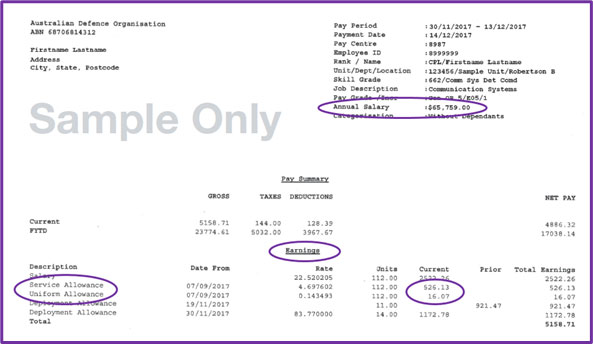
Insuring Your Assets – Some Key Points to Consider
August 16, 2022
Financial Advisers, Planners and Counsellors – What’s the Difference?
October 14, 2022Greed and Debt
During the decade leading up to the Global Financial Crisis (GFC), the world was awash with greed and debt, both corporate and personal. Stories abounded in the ADF and the wider community of ordinary Australians who had borrowed heavily to purchase real estate. It was not uncommon to hear stories about young couples who owned 10 to 15 highly geared properties where their ownership equity in the total portfolio was 5% or less.
These eternally optimistic people with nerves of steel and sincere (if not naive) conviction about their financial position, owed millions of dollars, were paying a small fortune in mortgage insurance (required to protect the lenders) and were receiving rental income that was nowhere near the monthly payments that they were making on interest only loans from lenders at a rate of about 7.5% per annum.
Being fixed interest loans, the borrowers were comforted to know that their interest payments wouldn’t change during the terms of their loans (3-5 years), but they also knew, unlike variable interest rate loans, that the principal of their loans (the original amounts borrowed) were not reducing.
Negative gearing
As a result, these investors were claiming an annual tax deduction for a real and substantial annual loss, being the difference between the incoming rents and the outgoing interest, council rates, repairs, insurance, depreciation and other expenses. This practice is known as “negative gearing”. It’s a tax-subsidised arrangement that has been a mainstay of Australian property investors and promoters for decades. It still is.
The investors hope, based on historical data and their love of real estate investing, that the properties on which they have borrowed will increase in value (after capital gains tax) to such an extent as to make their losses irrelevant and the investment risks worthwhile. History shows that many people have done well using negative gearing. Many have not.
Typically, the investors described in this article were convinced that they were on a winner. They expressed no concerns about the serious risks that most people would perceive in such a highly geared structure, so convinced were they about the future of Australian real estate which they believed would rise in value forever, thereby creating the financial independence and early retirement that they were seeking.
The GFC in 2008
Then came the GFC in 2008 accompanied by a frightening economic downturn. A 1929-style depression was predicted, but the worst consequences of the worldwide downturn were avoided in Australia, thanks principally to urgent financial stimulus by government (as during the recent pandemic). Nevertheless, many investors lost their jobs, resulting in significant reductions in family income.
The value of real estate dropped which meant that many highly geared investors were left in a position where their mortgages exceeded the value of their properties (in investment jargon, that’s described as being “underwater”). Some of their tenants failed to pay the rent and did not renew their tenancies. And lenders became understandably nervous about their customers’ capacity to make payments on their fixed interest rate loans.
ADF members in that position were fortunate because even though many of their partners lost their private sector jobs, our members retained their secure employment in the ADF which provided a regular income to partly service their loans. In many cases, this bought time to renegotiate with lenders, thereby staving off forced fire sales until the market lifted enough to consider rationalising their portfolio without extreme financial pain.
Two important lessons
The mental strain of these experiences was immense. People who went through them learned two important lessons (sadly, in the hard way) about borrowing money:
Lesson 1: Ask the “What if” questions
Before taking the plunge into debt, ask yourself:
- What if I or my partner were to lose our jobs or suffer a major drop of income?
- What if I or my partner were to become ill and couldn’t continue to work?
- What if I or my partner were to die?
- What if we were to start a family?
- What if interest rates were to rise significantly?
- What if property values were to drop as a result of a recession?
- What if I were to discharge from the ADF?
- What if I can’t find a tenant or they stop paying their rent?
- What if my tenant damages my property and leaves me with expensive repairs?
Lesson 2: The importance of a “Nest Egg”
Consider setting aside a “nest egg” bank account of, say, 3 to 6 months in easily accessed funds to pay the bills in the event of that unexpected “rainy day”.
Sensible Investing
Our purpose here is not to dissuade you from borrowing money. On the contrary, borrowing to acquire growth assets like real estate, especially whilst an ADF member, can be a sensible decision. That’s because our members are (generally speaking) not only younger and fitter than the rest of the Australian community, they have considerable job security and receive a regular fortnightly income.
These characteristics make them highly desirable potential customers of motivated lenders. Therefore, when you decide to explore your borrowing options, don’t take the first offer that comes along. The real estate lending market is highly focussed on attracting customers like ADF members, so do yourself a favour…take your time and shop around for the best deal.
Like to know more?
If you’d like to know more about sensible borrowing and investing, go to the Money Guides section on our website and consult moneysmart.gov.au.
If you have any questions about any of the issues in this article or you have serious financial difficulties, especially with excessive levels of debt, please contact us. We’ll provide you with additional resources or put you in touch with financial counsellors who will offer you options and advice, free of charge.






